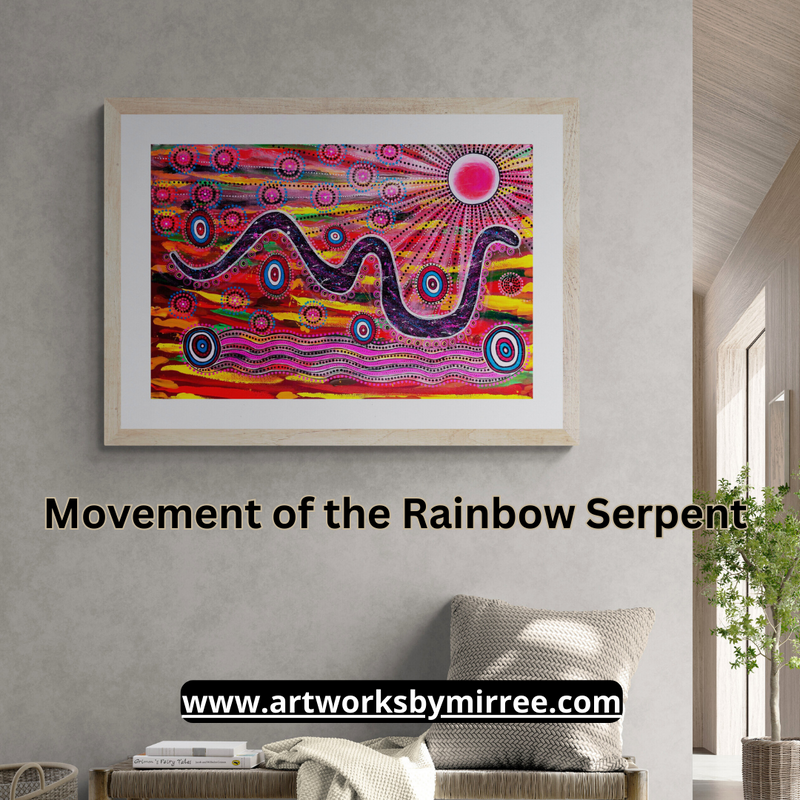Turtles hold a revered status in numerous cultures globally due to the symbolism they represent. Across Native American tribes, these creatures are deeply intertwined with the earth symbol, embodying qualities of protection and spirituality. In African societies, turtles are seen as symbols of transformation and rebirth, signifying a continuous cycle of growth and renewal. Their portrayal in various forms of art and folklore throughout different civilizations underscores their profound cultural significance and the widespread reverence they inspire.
Turtles are not just seen as mere creatures but as embodiments of enduring wisdom, longevity, and unwavering stability. For instance, the Chinese culture views turtles as symbols of longevity and protection, often depicted with a tortoise carrying the world on its back. Similarly, in Hindu mythology, the turtle is associated with the god Vishnu, symbolizing the preservation of the universe during times of great turmoil.
Moreover, in Japanese folklore, the turtle is considered a symbol of good fortune and longevity, with the belief that seeing a turtle during a time of need brings luck and prosperity. In Hawaiian culture, the turtle, or "honu," is revered as a guardian spirit and a symbol of good luck and protection.
The universal respect and admiration for turtles stem from their inherent connection to the natural world and their ability to navigate both land and sea with grace and resilience. Their significance transcends geographical boundaries, emphasizing the profound impact they have on human societies across the globe. The enduring symbolism of turtles serves as a reminder of the interconnectedness of all living beings and the importance of respecting and honoring the wisdom and stability they represent.
The Snake-Head Turtle also commonly named Eastern Long Neck Turtle, a small reptile native to Wiradjuri Country, is a familiar sight for Mirree, often spotted traversing roads as it moves between swamps in search of sustenance and water sources. Sadly, many of these turtles meet unfortunate fates during their journeys. Mirree, however, had the privilege of witnessing one of these creatures in its natural aquatic habitat, gracefully gliding through the water. This particular painting beautifully captures the essence of that moment, portraying the turtle in its element—swimming freely amidst its surroundings. While Mirree has previously incorporated floral elements like the lotus in her artworks, such as in the depiction of the Dreamtime Brolga, the presence of lotus flowers in her water animal paintings symbolizes a profound sense of interconnectedness and harmony.
The Lotus Flower, a native Australian bloom commonly found in shades of Pink, White, or Yellow, holds cultural significance and embodies themes of purity and spiritual enlightenment. Its inclusion in Mirree's artwork serves to underscore the universal bond that ties all living beings together, emphasizing the delicate balance and unity that exist within the natural world. Through her art, Mirree not only captures the beauty of the Snake-Head Turtle but also conveys a deeper message of connection and respect for the environment.
Purchasing the Dreamtime Turtle can be a meaningful addition to your collection, offering a unique blend of contemporary Aboriginal art and cultural storytelling. It symbolizes unity and connection, enriched by the beauty of lotus flowers, and reflects the natural interconnectedness of life. This artwork not only enhances your space aesthetically but also carries deep cultural significance and supports the preservation of Aboriginal art traditions.
In art, the lotus often symbolizes purity, enlightenment, self-regeneration, and rebirth. Its characteristics are a perfect analogy for human conditions: even when its roots are in the dirtiest waters, the lotus produces the most beautiful flower.
Supporting contemporary Aboriginal artists like Mirree Louise Bayliss is vital for several reasons. It helps preserve and promote Indigenous cultures, ensuring their stories and traditions continue to be shared and celebrated. Additionally, it contributes to the economic empowerment of Indigenous communities, providing artists with the means to sustain their practice and livelihood. By purchasing their art, you're not only acquiring a piece of cultural heritage but also supporting the broader movement towards reconciliation and cultural appreciation.
The Dreamtime Turtle artwork contributes to reconciliation by fostering a deeper understanding and appreciation of Aboriginal culture and stories. Through the depiction of the Snake-Head Turtle, inviting viewers to reflect on the significance of the natural elements within Wiradjuri Country and Aboriginal spirituality. This act of sharing and celebrating Indigenous stories through contemporary art plays a vital role in bridging cultural gaps and promoting mutual respect.
Art bridges cultural gaps by enabling effective communication across languages and cultures, accurately conveying messages in ways that resonate with target audiences. It plays a critical role in our globalized world, facilitating understanding and connection through the universal language of visual expression.
Why is visual story-telling powerful?
Visual storytelling is powerful because it leverages imagery to capture attention, evoke emotions, and convey complex messages quickly and memorably. It transcends language barriers, making stories universally understandable and engaging, thus enhancing communication and connection with audiences.
How to create effective visual stories?
To create effective visual stories, focus on combining compelling imagery with a clear narrative. For example, as a contemporary Aboriginal artist, you could leverage your skills in painting and digital media to craft visual stories that explore themes of cultural significance, unity, or connection with nature. This approach can enhance the emotional impact and engagement of your artwork, making it more memorable and meaningful to your audience.
Can art influence social change?
Art influences social change by reflecting societal norms, challenging them, and inspiring action. Through visual storytelling and creative expression, art can provoke thought, evoke emotions, and foster community engagement, leading to awareness and activism.
Take this chance to own this one-of-a-kind Dreamtime Turtle Original Painting today while you can be for its too late!
Turtles are not just seen as mere creatures but as embodiments of enduring wisdom, longevity, and unwavering stability. For instance, the Chinese culture views turtles as symbols of longevity and protection, often depicted with a tortoise carrying the world on its back. Similarly, in Hindu mythology, the turtle is associated with the god Vishnu, symbolizing the preservation of the universe during times of great turmoil.
Moreover, in Japanese folklore, the turtle is considered a symbol of good fortune and longevity, with the belief that seeing a turtle during a time of need brings luck and prosperity. In Hawaiian culture, the turtle, or "honu," is revered as a guardian spirit and a symbol of good luck and protection.
The universal respect and admiration for turtles stem from their inherent connection to the natural world and their ability to navigate both land and sea with grace and resilience. Their significance transcends geographical boundaries, emphasizing the profound impact they have on human societies across the globe. The enduring symbolism of turtles serves as a reminder of the interconnectedness of all living beings and the importance of respecting and honoring the wisdom and stability they represent.
The Snake-Head Turtle also commonly named Eastern Long Neck Turtle, a small reptile native to Wiradjuri Country, is a familiar sight for Mirree, often spotted traversing roads as it moves between swamps in search of sustenance and water sources. Sadly, many of these turtles meet unfortunate fates during their journeys. Mirree, however, had the privilege of witnessing one of these creatures in its natural aquatic habitat, gracefully gliding through the water. This particular painting beautifully captures the essence of that moment, portraying the turtle in its element—swimming freely amidst its surroundings. While Mirree has previously incorporated floral elements like the lotus in her artworks, such as in the depiction of the Dreamtime Brolga, the presence of lotus flowers in her water animal paintings symbolizes a profound sense of interconnectedness and harmony.
The Lotus Flower, a native Australian bloom commonly found in shades of Pink, White, or Yellow, holds cultural significance and embodies themes of purity and spiritual enlightenment. Its inclusion in Mirree's artwork serves to underscore the universal bond that ties all living beings together, emphasizing the delicate balance and unity that exist within the natural world. Through her art, Mirree not only captures the beauty of the Snake-Head Turtle but also conveys a deeper message of connection and respect for the environment.
Purchasing the Dreamtime Turtle can be a meaningful addition to your collection, offering a unique blend of contemporary Aboriginal art and cultural storytelling. It symbolizes unity and connection, enriched by the beauty of lotus flowers, and reflects the natural interconnectedness of life. This artwork not only enhances your space aesthetically but also carries deep cultural significance and supports the preservation of Aboriginal art traditions.
In art, the lotus often symbolizes purity, enlightenment, self-regeneration, and rebirth. Its characteristics are a perfect analogy for human conditions: even when its roots are in the dirtiest waters, the lotus produces the most beautiful flower.
Supporting contemporary Aboriginal artists like Mirree Louise Bayliss is vital for several reasons. It helps preserve and promote Indigenous cultures, ensuring their stories and traditions continue to be shared and celebrated. Additionally, it contributes to the economic empowerment of Indigenous communities, providing artists with the means to sustain their practice and livelihood. By purchasing their art, you're not only acquiring a piece of cultural heritage but also supporting the broader movement towards reconciliation and cultural appreciation.
The Dreamtime Turtle artwork contributes to reconciliation by fostering a deeper understanding and appreciation of Aboriginal culture and stories. Through the depiction of the Snake-Head Turtle, inviting viewers to reflect on the significance of the natural elements within Wiradjuri Country and Aboriginal spirituality. This act of sharing and celebrating Indigenous stories through contemporary art plays a vital role in bridging cultural gaps and promoting mutual respect.
Art bridges cultural gaps by enabling effective communication across languages and cultures, accurately conveying messages in ways that resonate with target audiences. It plays a critical role in our globalized world, facilitating understanding and connection through the universal language of visual expression.
Why is visual story-telling powerful?
Visual storytelling is powerful because it leverages imagery to capture attention, evoke emotions, and convey complex messages quickly and memorably. It transcends language barriers, making stories universally understandable and engaging, thus enhancing communication and connection with audiences.
How to create effective visual stories?
To create effective visual stories, focus on combining compelling imagery with a clear narrative. For example, as a contemporary Aboriginal artist, you could leverage your skills in painting and digital media to craft visual stories that explore themes of cultural significance, unity, or connection with nature. This approach can enhance the emotional impact and engagement of your artwork, making it more memorable and meaningful to your audience.
Can art influence social change?
Art influences social change by reflecting societal norms, challenging them, and inspiring action. Through visual storytelling and creative expression, art can provoke thought, evoke emotions, and foster community engagement, leading to awareness and activism.
Take this chance to own this one-of-a-kind Dreamtime Turtle Original Painting today while you can be for its too late!






0 comments